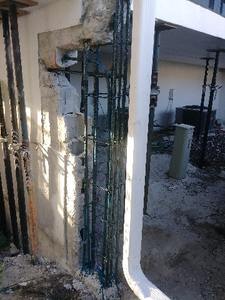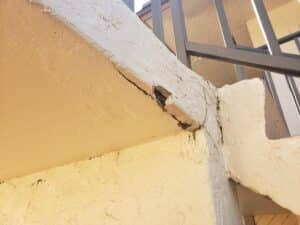Stucco, with its unique texture and durable character, has stood the test of time as a favored building material. As specialists in building restoration and maintenance, we understand the crucial role stucco plays not only in the aesthetic appeal of a property but also in its protection from environmental elements. Whether you’re dealing with a historical building or a modern structure, stucco can provide both the elegance and fortitude you need. However, to maintain these benefits, proper restoration and upkeep are key.
A well-applied stucco finish can last decades, but like all exterior materials, it faces challenges from weather, physical impact, and time. Recognizing the signs of wear and understanding how to address them effectively ensures that stucco continues to protect and enhance your building. In this guide, we’ll cover everything from identifying common issues to detailed restoration steps and ongoing maintenance tips, equipping you with the knowledge to manage your stucco’s condition expertly.
By investing in regular care and timely restoration, you can extend the lifespan and appearance of your stucco exterior, ensuring it remains a protective and attractive feature of your property. Join us as we delve into practical, effective strategies for stucco maintenance that we have honed over our years of experience in the field.
What Is Stucco and Why Choose It for Your Building?
Stucco is a versatile building material made from cement, lime, and sand, which can be applied in multiple layers to create a strong, weather-resistant surface. Its popularity stems from both its practical and aesthetic benefits. Not only does stucco provide an attractive finish that can be tailored with different textures and colors, but it also acts as an excellent insulator against heat and cold, which can help to reduce energy costs. Additionally, stucco is known for its durability and resistance to fire, making it a safe choice for many types of structures.
We often recommend stucco for buildings that require a robust facade that will withstand the elements, especially in regions where extreme temperatures or frequent storms are common. Its adaptability in style makes it ideal for both historical renovations and contemporary designs, allowing property owners to achieve the desired look without compromising on quality or performance. Choosing stucco can significantly enhance the structural integrity and aesthetic value of any property.
Identifying Common Stucco Problems and Their Causes
Recognizing and addressing common stucco problems early can prevent more serious damage, saving time and money in the long run. One frequent issue is cracking, which can occur from foundation settling, improper installation, or environmental stress. Cracks not only mar the appearance of the exterior but can also allow moisture to penetrate, leading to more severe issues like mold or structural damage. Another typical problem is bubbling or blistering in the stucco coating, often caused by water infiltration. If left untreated, this moisture can expand and compromise the wall’s integrity.
Staining is another indicator that repairs may be necessary. Stains can signify underlying moisture issues that need immediate attention to prevent deterioration. Additionally, if you notice your stucco feels soft to the touch or appears to be crumbling, this could indicate extensive water damage or aging material that requires professional restoration. Understanding these common problems and their warning signs helps us effectively diagnose and treat the specific needs of each building, ensuring that the beauty and function of the stucco façade are maintained.
Step-by-Step Stucco Restoration Techniques
Restoring stucco can seem daunting, but with the right techniques, we can bring even the most weathered surfaces back to life. The first step in any stucco restoration is a thorough cleaning of the area to remove dirt, debris, and any loose material. This is typically done using a soft brush and a mild cleaning solution to prevent damage to the underlying stucco. Once the surface is clean, we assess the extent of the damage to determine the appropriate repair strategy.
For minor cracks, a high-quality stucco patching compound is applied. It’s essential to ensure that the compound is compatible with the existing stucco to prevent future separation. For larger cracks or areas where stucco has fallen away, we apply a new layer of stucco mix, carefully blending it into the existing surface for a seamless repair. Throughout the process, moisture management is critical; therefore, we may also incorporate waterproofing techniques, ensuring that the new stucco doesn’t succumb to the same issues as before.
Maintaining Your Restored Stucco for Longevity
After restoring your stucco, maintaining its condition is key to ensuring it lasts for years to come. We recommend regular inspections to catch any potential problems early. Paying close attention to changes in the texture or color of the stucco can alert you to issues before they become severe. It is also advisable to clean your stucco periodically to prevent build-up of pollutants that can wear down the surface.
Sealing the stucco with a breathable, waterproof sealer every few years can greatly enhance its resistance to moisture and decay. This is particularly important in climates subject to heavy rain or humidity. Additionally, trimming plants and trees away from stucco surfaces can prevent damage caused by encroaching roots or moisture retention from foliage. By following these maintenance steps, your stucco will not only look better but also offer extended protection for the building it covers.
Final Thoughts
Stucco is a durable, attractive option for any building, combining both aesthetic appeal and structural resilience. By understanding how to properly maintain and restore stucco, you can ensure that it continues to protect and enhance your property for decades.
At McLeod’s Contracting Solutions, we pride ourselves on our expert knowledge of building materials and our commitment to maintaining the integrity and beauty of each property we serve. If your stucco needs attention or seeking advice on the best care practices, don’t hesitate to contact us. Let our concrete stucco repair services help you keep your building in excellent condition year after year!







